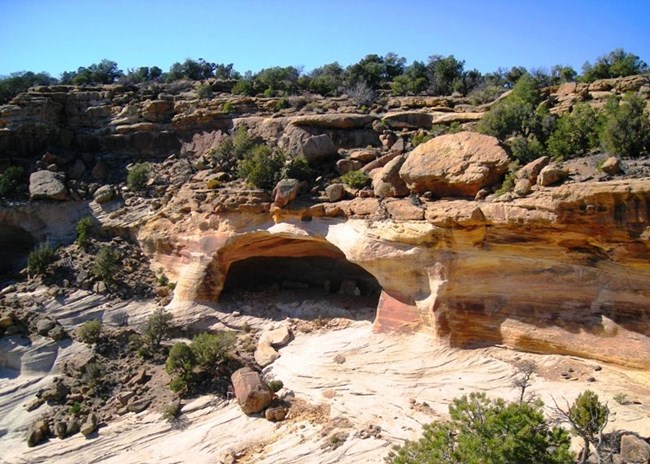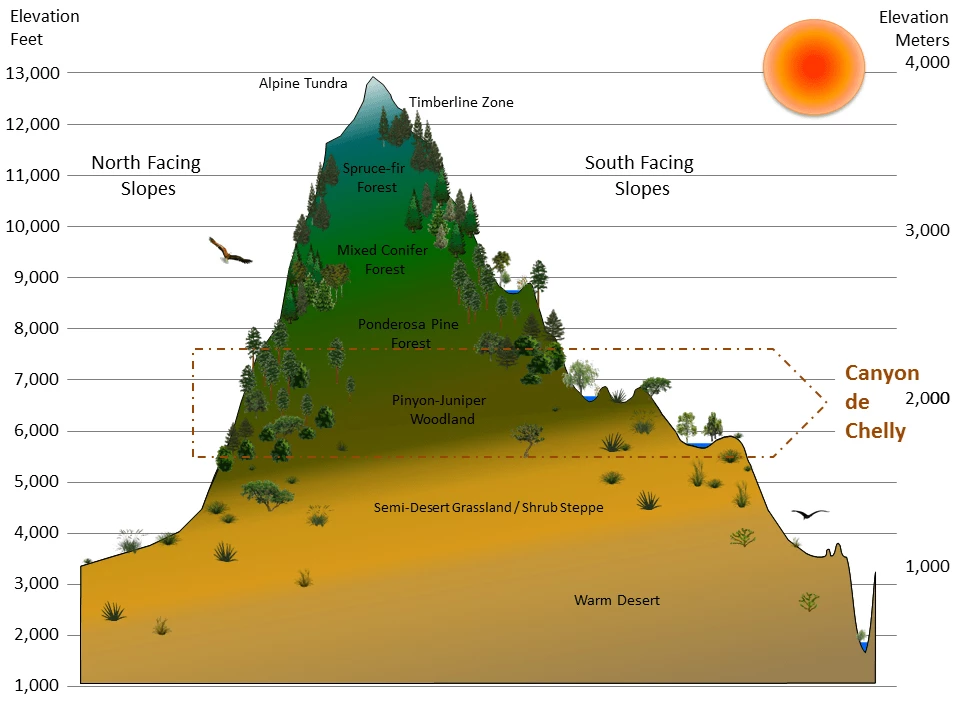
NPS
Canyon de Chelly National Monument lies within Navajo Nation lands and encompasses 83,837 acres (33,928 hectares) in northeastern Arizona. The park was designated in 1931 to protect prehistoric villages built between 350 and 1300 A.D., and is cooperatively managed by the Navajo Nation and the National Park Service.
Canyon de Chelly NM is comprised of four main canyons that drain the Chuska Mountains and the Defiance Plateau. The canyons extend from the monument's eastern edge on Defiance Plateau to Chinle Wash at its western edge.
Pinyon-juniper woodland and Colorado Plateau desert shrub communities are found at lower elevations in the park. A transition zone of ponderosa pine (Pinus ponderosa), Douglas-fir (Pseudotsuga menziesii), quaking aspen (Populus tremuloides) and Gambel oak (Quercus gambelii) occurs at higher elevations on the rim and in the Chuska Mountains.
Riparian vegetation is found on the canyon bottoms. Hanging gardens, an unusual community of plants, can be found on the cliff faces of canyons.
The monument supports 8 amphibian, 147 bird, 34 fish, 49 mammal, and 14 reptile species. Water resources include streams, both perennial and intermittent, 12 springs, and a perennial pond.
Monitored Here
Species Lists
Select a Park:
Select a Species Category (optional):
Visit NPSpecies for more comprehensive information and advanced search capability. Have a suggestion or comment on this list? Let us know.
Life Zones
Canyon de Chelly National Monument ranges in elevation from 5,533 to 7,662 feet (1,686-2,335 m) and spans the Semi-Desert Grassland/Shrub Steppe, Pinyon-Juniper Woodland, and Ponderosa Pine Forest life zones. It experiences an average annual precipitation of about nine inches (225 mm).

Climate Summary Chart
Charts are an effective way to summarize and graphically represent climate variables. The following chart is based on the diagrams developed for vegetation studies by Walter and Lieth in 1967. Visit our climate page for more information.

Reports & Publications
Inventories are point-in-time surveys that help us learn about the resources in our parks. Information obtained through the Southern Colorado Plateau Network’s inventories of park resources helped to establish a base level of data, which has served as a starting point for our natural resource monitoring.
Source: NPS DataStore Saved Search 3515 (results presented are a subset). To search for additional information, visit the NPS DataStore.
Source: NPS DataStore Saved Search 3471 (results presented are a subset). To search for additional information, visit the NPS DataStore.
Source: NPS DataStore Saved Search 3280 (results presented are a subset). To search for additional information, visit the NPS DataStore.
Last updated: August 23, 2023
